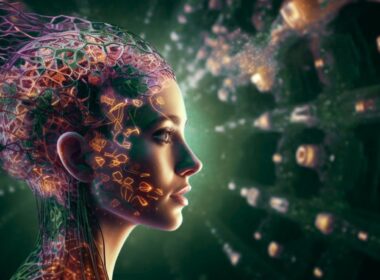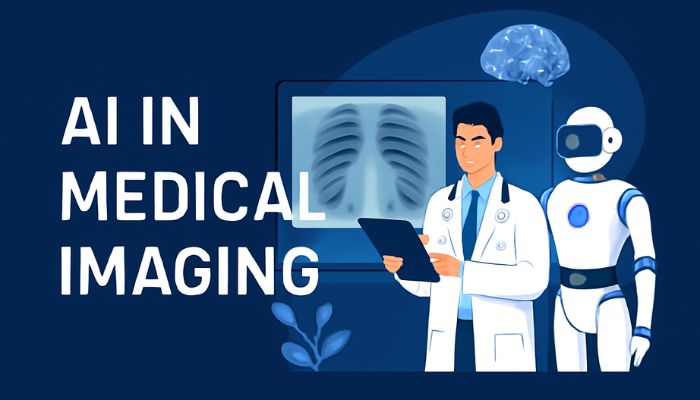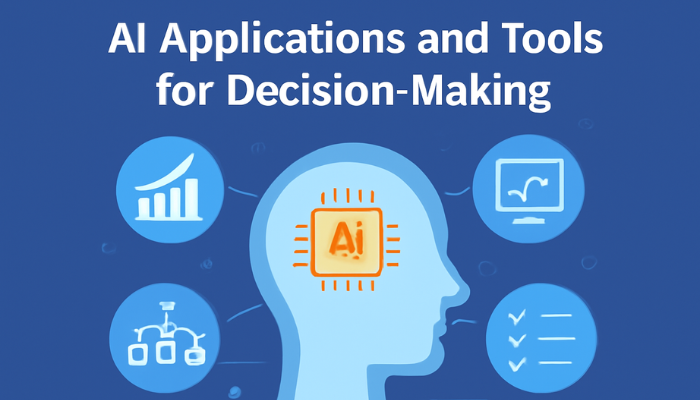Did you know that 90% of all healthcare data comes from medical imaging? Yet radiologists are drowning in scans, pushed to their limits by long hours and heavy caseloads. Every second counts, especially when a missed detail could change a life.
Now, what if there was a way to lighten this load without cutting corners?
Picture a tool that could:
- Analyze a chest X-ray in seconds
- Spot tumors long before symptoms appear
- Help radiologists report faster and with greater accuracy
That tool isn’t a future invention—it’s AI in medical imaging, already reshaping diagnostics today. From detecting breast cancer better than human experts to predicting cardiac risk through retinal scans, AI is quietly becoming the doctor’s new right hand.
What is Medical Imaging?
Medical imaging is the process of creating visual representations of the interior of a body for clinical analysis and medical intervention. It’s essential for diagnosing, monitoring, and treating various health conditions. Without it, detecting and treating diseases such as cancer, heart disease, or neurological disorders would be far more challenging.
Common medical imaging techniques include:
- X-rays: Primarily used for detecting fractures, infections, and tumors.
- CT Scans (Computed Tomography): Provides detailed cross-sectional images of the body, helping doctors assess conditions like trauma, cancer, and infections.
- MRI (Magnetic Resonance Imaging): Offers detailed images of soft tissues, including the brain, muscles, and organs.
- Ultrasound: Uses sound waves to capture images of organs and tissues, commonly used in obstetrics to monitor pregnancies.
- PET Scans (Positron Emission Tomography): Detects metabolic changes in tissues and organs, often used in oncology.
These imaging techniques provide crucial insights into the body’s inner workings, but interpreting the images accurately and quickly is where challenges arise. This is where AI-powered medical imaging steps in, reshaping how these tools are used and improving diagnostic accuracy.
With medical imaging in mind, let’s look at how AI is changing the way we analyze and interpret images, making diagnoses faster and more accurate.
The Role of AI in Medical Imaging
AI is taking medical imaging to the next level by automating tasks, enhancing accuracy, and enabling quicker diagnoses. Here’s how:
- Faster Analysis: AI can analyze complex images in seconds, significantly speeding up the diagnostic process. For instance, AI systems can examine a chest X-ray or MRI scan much faster than a human to help doctors make quicker decisions, especially in emergency situations.
- Enhanced Accuracy: AI algorithms, particularly deep learning models, have the ability to detect subtle patterns that might go unnoticed by the human eye. This ability makes AI incredibly powerful for early disease detection—especially in the case of cancers or conditions like stroke, where early intervention is crucial.
- Reducing Radiologist Burnout: Radiologists are faced with an overwhelming workload that leads to burnout and potential oversights. AI takes care of routine tasks like image triaging, allowing radiologists to focus on more complex cases. This not only improves job satisfaction but also helps reduce human error in diagnoses.
- Predictive Power: AI doesn’t just stop at diagnosing visible issues—it also has the ability to predict future health problems by analyzing medical images over time. This predictive power allows doctors to intervene much earlier, even before symptoms appear, leading to better patient outcomes.
- Better Resource Allocation: By prioritizing urgent cases and filtering out routine ones, AI helps hospitals use scanners, beds, and clinical staff more efficiently. Imaging backlogs are reduced, and high-risk patients are seen faster, without overextending resources.
- Lower Operational Costs: AI reduces the need for repeat scans, speeds up radiologist reporting, and helps avoid unnecessary testing. These gains add up to measurable savings on labor, equipment usage, and consumables, improving ROI across imaging departments.
- Improved Compliance & Standardization: AI tools generate structured reports, highlight key findings, and support decision-making based on medical guidelines. This helps institutions stay compliant with national protocols and reduces audit-related headaches.
- Stronger ROI for Imaging Departments: Implementing AI may seem like a tech expense at first glance, but it quickly becomes an investment with returns. Faster report turnaround means more cases handled per day, leading to increased revenue. Add to that fewer errors, better patient throughput, and lower rework costs, and the financial value becomes clear.
- Boosted Patient Satisfaction: When patients receive faster diagnoses and fewer follow-up appointments due to better accuracy, their trust in care improves. This supports hospital ratings, encourages retention, and improves reimbursement outcomes under patient-centered care models.
We’ve seen how AI is making a difference in medical imaging. So, what are some of the key applications that are progressing healthcare? Let’s take a look at the practical ways AI is already at work in medical imaging.
Applications of AI in Medical Imaging
AI is making a significant impact in the field of medical imaging by enhancing diagnostic accuracy, improving workflow efficiency, and enabling faster decision-making. From early disease detection to automating image analysis, AI technologies are changing how healthcare professionals interpret medical images. Key applications include:
Early Disease Detection & Diagnosis
AI systems are increasingly being used to detect diseases at an early stage, often before symptoms appear. For example, AI algorithms can analyze mammograms to spot early signs of breast cancer, or CT scans for lung cancer, helping doctors intervene sooner and improve patient outcomes.
Radiology Assistance
AI-powered software can assist radiologists by automatically analyzing images and highlighting areas that require attention. This helps reduce diagnostic time and enables radiologists to focus on complex cases. AI tools can also prioritize urgent cases for timely intervention.
Automated Image Interpretation
AI can quickly interpret medical images like X-rays, MRIs, and CT scans, making it faster to diagnose conditions such as fractures, infections, and tumors. This reduces the time patients have to wait for results and allows healthcare professionals to make faster, more informed decisions.
Personalized Treatment Plans
By analyzing medical images alongside patient history and genetic data, AI can help create personalized treatment plans. For example, AI can recommend the most effective therapies based on an individual’s specific medical profile, improving treatment accuracy.
Predictive Analysis for Risk Assessment
AI isn’t just about diagnosing existing conditions—it can also predict the likelihood of future health risks. For instance, AI systems can analyze retinal scans to predict the risk of heart disease or detect diabetic retinopathy, helping doctors intervene before a condition worsens.
Enhancing Workflow Efficiency
AI simplifies workflows in medical imaging by automating repetitive tasks, such as image sorting and prioritizing, allowing radiologists to spend more time focusing on complex cases. This increases overall efficiency in hospitals and clinics.
3D Imaging and Visualization
AI can enhance 3D imaging by creating more detailed and accurate visual representations of body parts. This is particularly useful in surgical planning or complex diagnoses, where a clearer view of the anatomy is critical.
Thinking about AI for your imaging workflow?
We build healthcare software that connects AI tools with your imaging systems, cuts reporting time, and keeps everything compliant.
While AI is undoubtedly making huge changes in medical imaging, it’s not without its hurdles. Let’s explore the key challenges that come with integrating AI into medical imaging and how they impact its widespread adoption.
Challenges in AI Medical Imaging
The following are the critical challenges must be resolved for broader AI implementation in medical imaging research:
Data Quality and Availability
AI models rely heavily on large datasets to train effectively. However, the quality and availability of medical imaging data can be inconsistent. Many healthcare providers still rely on older imaging systems or have limited access to diverse datasets, which affects the AI’s ability to learn and generalize. The issue of data privacy also arises, as healthcare data is highly sensitive.
Solution: Hospitals can start by digitizing legacy records and participating in data-sharing collaborations with research institutions and consortiums. Federated learning is a method where AI is trained across decentralized data without moving it. It also helps protect privacy while expanding access to diverse datasets. Strict anonymization protocols ensure compliance with patient confidentiality.
Regulatory and Ethical Concerns
The introduction of AI in healthcare must comply with strict regulations to ensure patient safety and privacy. FDA approvals and compliance with HIPAA are necessary for AI tools to be widely adopted. Ethical concerns about the transparency of AI decision-making processes also arise, especially when it comes to patient consent and data usage.
Solution: Work with vendors that have received regulatory clearances and provide explainable AI models, where decision paths can be traced and audited. Build internal governance teams to review compliance and align AI use with hospital ethics policies. Transparent communication with patients about how their data is used helps strengthen trust.
Trust and Adoption by Healthcare Professionals
While AI shows great promise, convincing healthcare professionals to fully trust AI recommendations can be challenging. Many doctors and radiologists may be reluctant to rely on AI, especially if they’re unsure about how the algorithms arrive at their conclusions. Continuous validation, training, and collaboration with AI systems are necessary to build this trust.
Solution: AI should be introduced as a support tool, not a replacement. Training sessions, pilot programs, and case-based learning can help doctors see AI’s strengths firsthand. When AI is positioned as a second set of eyes, adoption improves. Involving clinicians during system rollout also builds confidence and ownership.
Bias in AI Models
Like any machine learning model, AI systems are susceptible to bias. If the training data used to develop AI models is not diverse or representative of all patient demographics, the AI can develop biased patterns that may lead to incorrect diagnoses or overlooked conditions in underrepresented groups. Addressing this bias is crucial to ensure fairness in AI-driven healthcare.
Solution: Diverse, demographically balanced datasets are key. Regular audits of AI output should be done to track disparities. Some hospitals are partnering with AI developers to co-create models using real-world local data to reduce inherent bias and improve accuracy across populations.
Cost of Implementation
The initial cost of integrating AI into medical imaging can be a significant barrier for smaller healthcare providers or hospitals with limited budgets. While AI promises long-term savings and efficiencies, the upfront investment in technology, training, and infrastructure can be prohibitive.
Solution: Start small. Many AI imaging tools are available via SaaS or cloud-based pay-per-use models, which remove the need for heavy capital expenditure. Grants and public-private partnerships can also help offset setup costs. Over time, improved productivity and lower error rates deliver a strong return on investment.
Continuous Learning and Updating
AI systems need continuous updates to remain accurate and relevant. As medical knowledge advances and new diseases are discovered, AI models must be retrained with fresh data to keep pace. This requires ongoing efforts to maintain and improve AI systems.
Solution: Choose vendors that offer ongoing model updates and support. Internally, assign a data science or radiology tech team to monitor model performance. Continuous feedback loops—where AI learns from real-time imaging results—help keep tools sharp and clinically relevant.
Integration with Existing Systems
Integrating AI tools with existing healthcare infrastructure can be complicated. Many hospitals and clinics still use legacy systems for their Electronic Health Records (EHRs) and imaging devices. AI systems need significant time and resources to work seamlessly across different platforms and devices.
Solution: Vendors are now building AI tools using open standards (like DICOM and HL7 FHIR) that can plug into existing PACS/RIS systems. Choosing AI platforms with modular architecture and strong API support makes integration smoother. Involving IT teams early during procurement ensures fewer disruptions.
Struggling to integrate AI into outdated hospital systems?
We specialize in building custom healthcare software that connects smoothly with EHRs, PACS, and AI tools—no matter how old your infrastructure is.
[Talk to Our Healthcare Tech Team →]
Despite these challenges, the potential benefits of AI in medical imaging are undeniable. With ongoing research, technological advancements, and collaboration between healthcare providers and AI developers, many of these hurdles can be overcome, making AI a key player in the future of healthcare.
While there are challenges to overcome, the advancements in AI technologies are paving the way for solutions. Let’s take a look at the key technologies driving the evolution of AI in medical imaging.
Key Technologies Behind AI in Medical Imaging
AI’s integration into medical imaging is powered by several advanced technologies that enable faster, more accurate, and reliable diagnoses. Key technologies include:
| Technology | Description | Role in Medical Imaging |
| Convolutional Neural Networks (CNNs) | A type of deep learning algorithm effective in image recognition. | Automatically detects patterns and anomalies in images (e.g., tumors, fractures) for accurate diagnosis. |
| Natural Language Processing (NLP) | A technology that enables machines to understand and process human language. | Bridges image data with written reports, assisting in documentation and understanding diagnostic findings. |
| Deep Learning | A subset of machine learning that involves training AI models with large datasets. | Analyzes complex medical images and helps with tasks like early detection of diseases (e.g., cancer, heart conditions). |
| Generative Adversarial Networks (GANs) | A machine learning model that generates realistic images from limited data. | Improves image quality, enhances resolution, and creates synthetic data for training AI models. |
| Reinforcement Learning (RL) | A machine learning approach where AI learns by interacting with its environment and receiving feedback. | Continuously improves diagnostic algorithms by learning from real-world data and healthcare interactions. |
| Computer Vision | Enables AI to interpret visual data and understand images. | Helps AI interpret and analyze medical images, identifying areas of interest like abnormal growths or diagnostic markers. |
| Cloud Computing and Edge Computing | Cloud computing provides remote data storage and processing, while edge computing processes data locally. | Facilitates storage and sharing of large imaging datasets (cloud) and quick, on-site analysis (edge), enabling real-time decisions. |
| AI-Powered PACS | AI-integrated Picture Archiving and Communication Systems (PACS) that store and manage medical images. | Enhances image access, prioritizes urgent cases, and provides AI-based diagnostic recommendations to healthcare professionals. |
Also Read: Exploring Generative AI Use Cases in Healthcare System
We’ve seen the technologies that are driving AI in medical imaging, but the journey doesn’t stop here. Let’s explore where this technology is headed and what future trends we can expect to see in the coming years.
Future Trends in AI Medical Imaging
As AI continues to evolve, its role in medical imaging is expected to grow even more dynamic. Here are a few exciting trends that are likely to define the future:
- Real-Time Diagnostics AI is progressing toward enabling real-time diagnostics, allowing healthcare professionals to make instant decisions during imaging procedures. For example, in emergency settings, AI can analyze images as soon as they’re taken, allowing for immediate intervention in cases like strokes or heart attacks.
- AI-Driven Personalized Medicine As AI becomes more advanced, it’s likely to play a larger role in personalized medicine. By combining imaging data with genetic information, AI can help doctors create highly individualized treatment plans, optimizing outcomes based on a patient’s unique characteristics.
- AI Integration with Advanced Imaging Technologies The integration of AI with emerging imaging technologies like 3D imaging and functional MRI (fMRI) will allow for more detailed and dynamic representations of the body. This will enhance diagnostic capabilities, especially for complex conditions, and lead to more precise treatment planning.
- Predictive Analytics for Early Disease Detection AI’s predictive capabilities will continue to evolve, enabling early detection of diseases before symptoms appear. By analyzing patterns across imaging data and patient history, AI can flag potential health risks (such as cancer, cardiovascular diseases, or neurodegenerative conditions) earlier than ever before.
- AI in Remote and Rural Healthcare. With telemedicine and remote healthcare growing, AI will play an essential role in making advanced diagnostic capabilities accessible in underserved areas. AI-powered imaging tools can be deployed in remote locations, enabling healthcare providers to make accurate diagnoses even without direct access to radiologists.
- Improved AI Interpretability and Transparency As AI becomes more integral in healthcare, there’s a growing need for explainable AI. Researchers and developers are focusing on making AI decision-making more transparent, helping healthcare professionals understand how AI arrives at certain conclusions. This transparency will build trust and ensure AI systems are used responsibly in clinical settings.
Also Read: Practical AI Use Cases in Major Industries
Conclusion: Why Choose Codewave for AI in Medical Imaging?
AI is making significant improvements in medical imaging, helping to speed up diagnoses, increase accuracy, and streamline workflows. At Codewave, we offer AI-powered solutions specifically designed to integrate smoothly with your current medical imaging systems, ensuring efficiency without disrupting your existing processes.
What We Offer:
- Custom AI Solutions for Medical Imaging: We develop AI models using TensorFlow and PyTorch that automatically analyze medical images, such as X-rays, MRIs, and CT scans. These tools help detect issues like tumors, fractures, and other conditions quickly and accurately.
- Automating Routine Tasks: With Convolutional Neural Networks (CNNs), we automate tasks like sorting and prioritizing images, allowing radiologists to focus on more complex cases and improving the overall workflow.
- Predictive Analytics: Using Reinforcement Learning (RL), we provide AI models that help predict health risks by analyzing medical images over time. This helps healthcare professionals intervene earlier in conditions like cancer or heart disease.
- Scalable and Secure Solutions: Our cloud-based AI systems ensure that your medical imaging tools can scale with your needs, securely storing and processing vast amounts of data, while complying with regulations like HIPAA.
- System Integration: Codewave ensures that AI seamlessly integrates with your PACS, EHR, and other existing medical systems. Our solutions work in harmony with your current infrastructure, improving efficiency without disrupting workflows.
- Ongoing Support and Updates: We don’t just build and leave—Codewave offers continuous support, ensuring that your AI systems stay current, adapt to evolving technology, and deliver long-term value.
With 400+ successful projects, Codewave brings expert knowledge in AI-driven solutions customized for healthcare. Our goal is to enhance your medical imaging capabilities, improve diagnostic efficiency, and ultimately provide better patient care.
Reduce Diagnostic Errors with AI-Powered Imaging – Let’s Talk!
Codewave is a UX first design thinking & digital transformation services company, designing & engineering innovative mobile apps, cloud, & edge solutions.







